Part 1 : "NIKKOREX 35 and NIKKOREX 35II (35/2)"
Among Nikon Cameras, everybody agrees that so-called "single-digit" models such as those in the Nikon S or Nikon F series have formed mainstream of Nikons.
There are, however, many cousins to these mainstream models.
Some didn't live out the test of time in the marketplace ; some even surpassed mainstream Nikons in specification or popularity.
Let us take a closer look at some of these lesser-heralded (but not less beloved) "Nikon cousins".
NIKKOREX 35
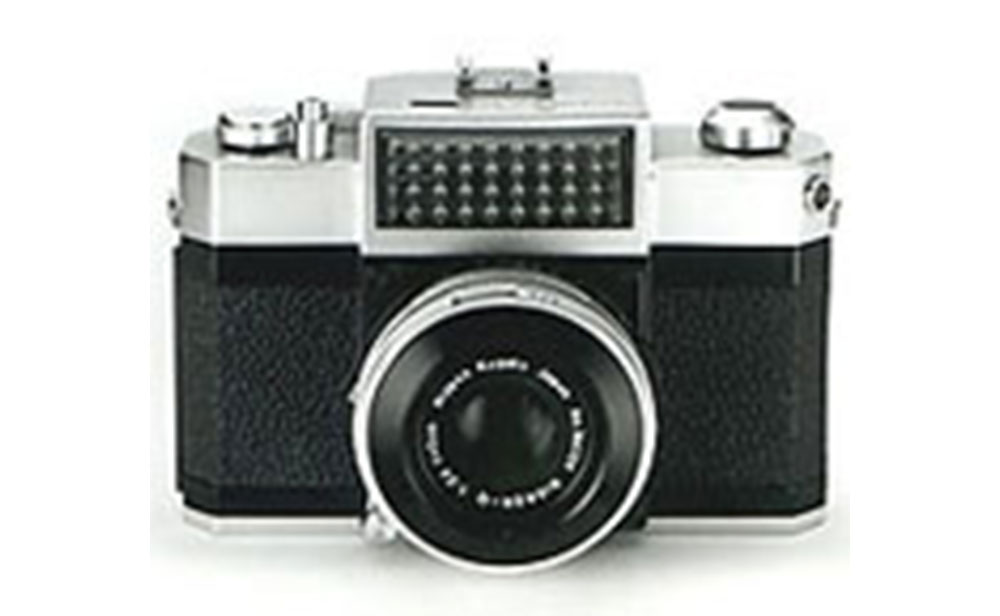
The NIKKOREX 35 was introduced in 1960 amidst major changes in the photographic industry.
That was when a boom in twin-lens reflex cameras (TLR) and spring cameras began to fade, while 35mm(135) format cameras secured their position in the mainstream camrera market.
Among high-end 35mm(135) format cameras that have interchangeable lens system, there was a shift in popularity toward single lens reflex(SLR) cameras and away from rangefinder cameras.
Several improvements in SLR technology, such as penta-prism eye-level finder and quick-return mirror caused this change and made SLR cameras more and more easy to use.
Thus the Asahi Pentax AP, introduced in 1957, the Minolta SR-2, introduced in 1958, and other groundbreaking 35mm(135) format SLR cameras grew in popularity.
On the other hand, a trend was going on toward lens-shutter-type 35mm(135) format cameras with built-in exposure meters, meter-coupling devices, and electric eye (EE) automatic exposure mechanisms.
Also around this time, the original lens shutter for programmed exposure control was developed.
These innovantions made such cameras very easy to use, which had required great expertise before.
It was natural, then, for Nippon Kogaku K. K. (now Nikon Corporation), renowned in the industry for high-end focal-plane shutter rangefinder cameras, who had just introduced the top-of-the-line Nikon F SLR in 1959, to enter the market for lower class 35mm(135) cameras in order to expand its business.
Ambitious Specifications
The NIKKOREX 35 was the first 35mm(135) format camera for beginners that was made by Nippon Kogaku K. K. , and it was loaded with a lot of adventurous specifications.
First, the viewfinder — an unreversed image eyelevel finder that adopted a porro-miror system instead of pentagonal prism (see Fig.1.).
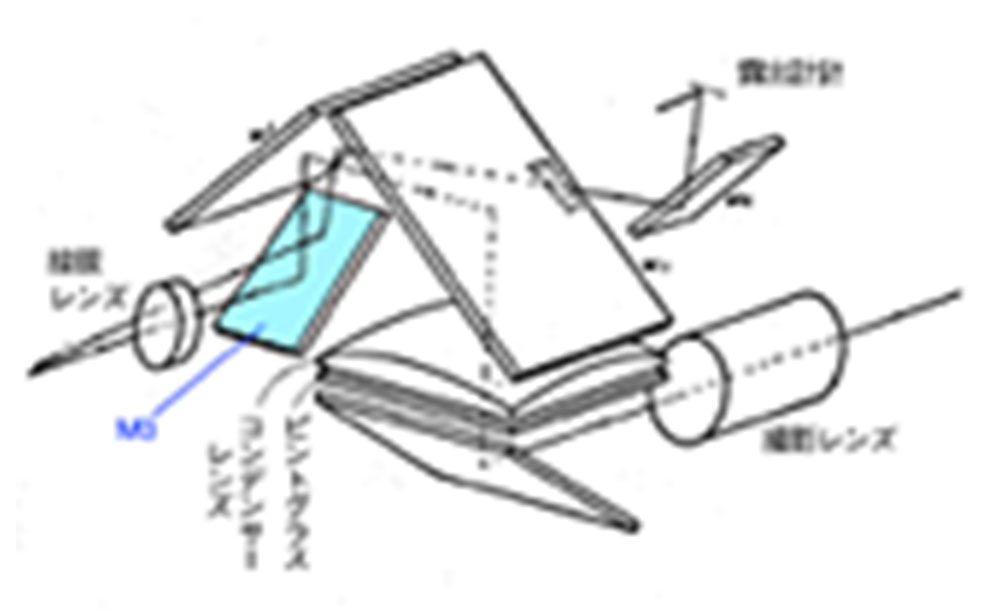
The purpose of this design was to make the camera lightweight and to reduce the cost.
However, according to the designer of the camera, there were more interesting reasons behind the matter.
In spite of rapidly spreading SLR camreras, camera users were still used to the arrangements of rangefinder cameras, which usually have the finder's eyepiece on the extreme left of the body when seen from the rear.
This new camera's porro-mirror system was just good for relocating the SLR finder's eyepiece in the center part to the left of the body, to get the similar feeling as rangefinder cameras.
Another surprise — a camera, with additional front objective lens and rectangular final reflecting mirror of the porro-mirror system (see M3 of Fig. 1.) was also made as another prototype.
A switchable double-finder camera which has both SLR finder and direct-view finder with common eyepiece !
If this model had been further developed and put on sale, it must have been truly unique one !
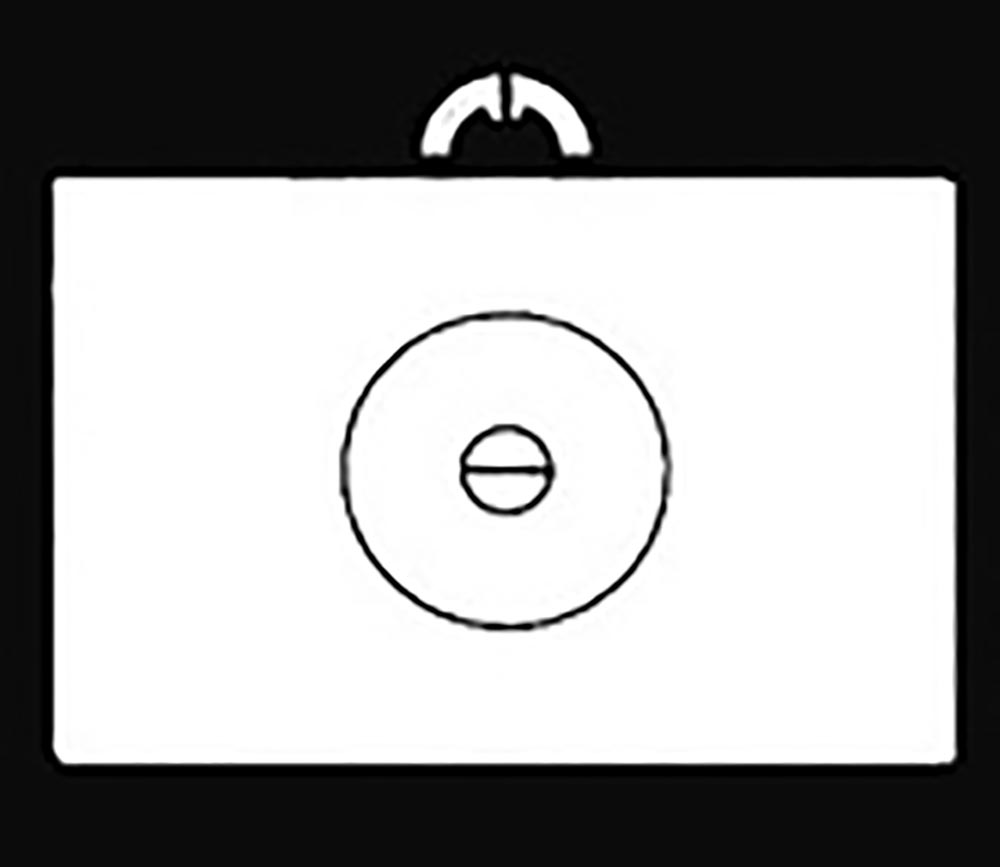
Besides its viewfinder, the camera was distinguished by the first built-in coupled exposure meter among Japan(Nippon)-made lens shutter SLRs.
It was also one of the earliest test cases where opinions of industrial designers were adopted in appearance design of a camera.
Problems
Contrary to big expectations for the NIKKOREX 35, many problems arose upon its release.
Nippon Kogaku K. K. was not much experienced in mass-production of relatively low cost cameras.
Besides, this was the first time that the company outsourced assembly operations for one of its cameras.
There was confusion caused by the difference of company culture.
The subcontractors had much diffculty in doing things which were easily accomplished in Nippon Kogaku K. K..
Engineers and technicians were frequently sent to teach and train them. But improvement was slow.
The lens shutter unit built into the camera was not a great match for this camera's mechanisms, which also caused problems.
NIKKOREX 35II (35/2)

Hard lessons nurture wisdom.
The NIKKOREX 35II (35/2) released in 1962 was significantly improved compared to its predecessor.
On the surface, there wasn't much change in specifications.
Perhaps the major change was in the switch of lens shutter unit from a Citizen MVL to a Seikosha (now Seiko Precision Inc.) SVL.
Even today, changing shuter units means almost total change in the camera body's mechanisms, and so was the case with this NIKKOREX 35II (35/2).
Fig. 3 compares two internal mechanisms profiled in Japanese "Shashin Kogyo (Photographic Industries)" magazine.
As shown in Fig. 3a, the NIKKOREX 35's complicated mechanical structure includes several levers, rack gears, cams and shafts located at the bottom of the body.
However, most of their function was integrated into a single large lever in the NIKKOREX 35II(35/2) as shown in Fig. 3b, thus simplifying its mechanisms.
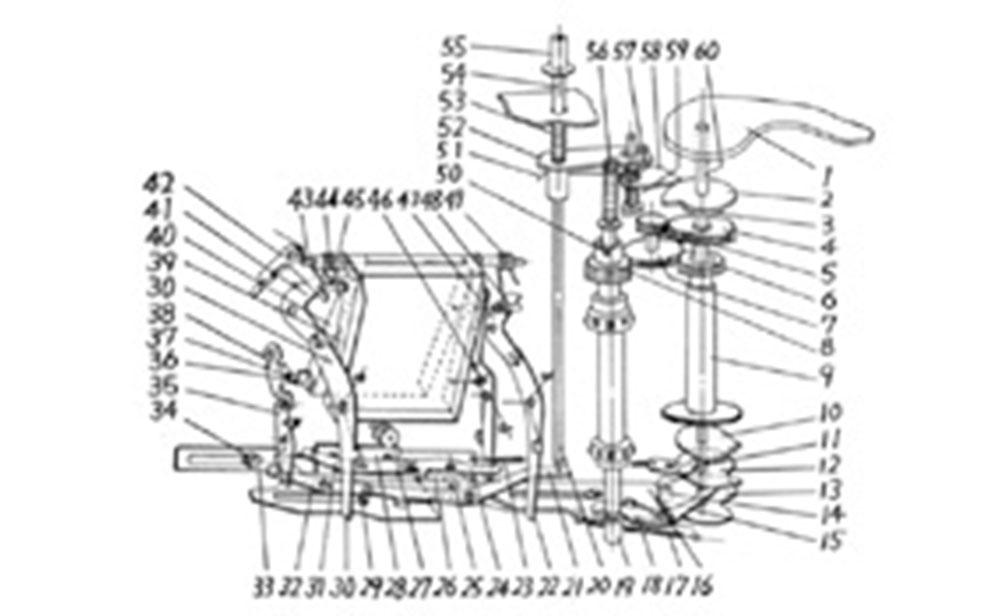
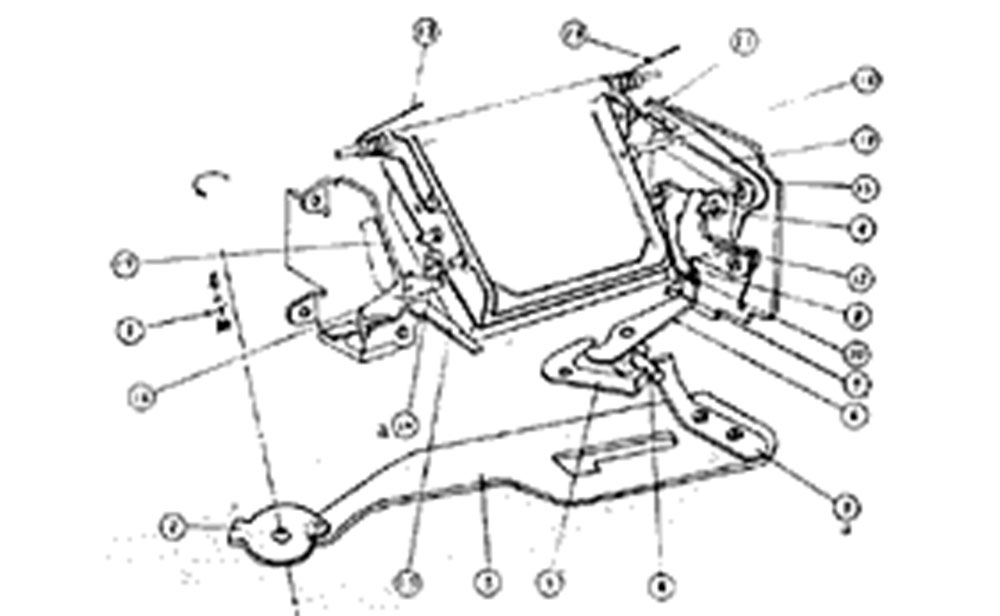
This simplicity enhances reliability and reduces problems that might otherwise plague manufacturing.
In order to distinguish the 35II(35/2) from its predecessor and to avoid to drag its predecessor's bad image, its creators gave it a new external design.
The top cover, the film advance lever, and some other components were re-designed.
The octagonal body shape of the NIKKOREX 35 was changed to the square one with round corners.
Such changes usually require the metal diecast mold to be rebuilt from scratch.
But with 35II(35/2), slight modifcation was made to the original mold and used again, minimizing the development and manufacturing costs of the newer product.
Despite such efforts, the NIKKOREX 35II(35/2) did not sell as well as its maker had expected.
Once bad impression has spread among users, it is very hard to change it.
However, production of these two(2) models brought a lot of valuable experience to Nippon Kogaku K. K..
It motivated the company to give greater consideration to every aspect of product development : Planning, design, manufacturing, communication with subcontractor manufacturers, assembly systems, and other processes.
This knowledge paved the way for later improvements to quality which Nippon Kogaku K. K. ultimately benefited form.
Although the NIKKOREX 35 and 35II(35/2) could not lead a happy life, they left a great legacy for their descendants.
Note
This issue first appeared in "Nikkor Club Quarterly" magazine , published by the Nikkor Club, and was later revised for "Camera Review : Classic Cameras" published by Asahi Sonorama.
It was re-revised for Nikon's webpage.
Products, brands and companies names are trademarks or registered trademarks of their respective companies.
Camera Chronicle
Archives of corporate history subject matter related to Nikon cameras, including rare materials, as well as product photos of cameras and lenses.
